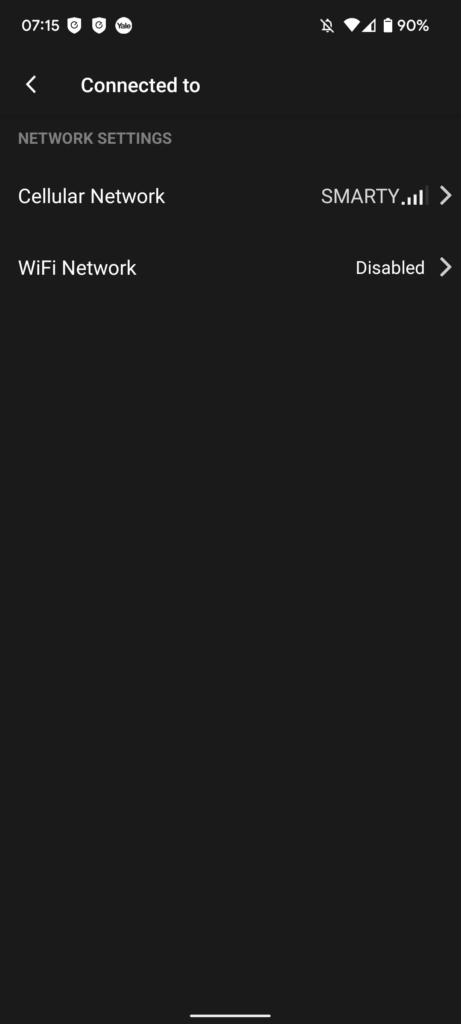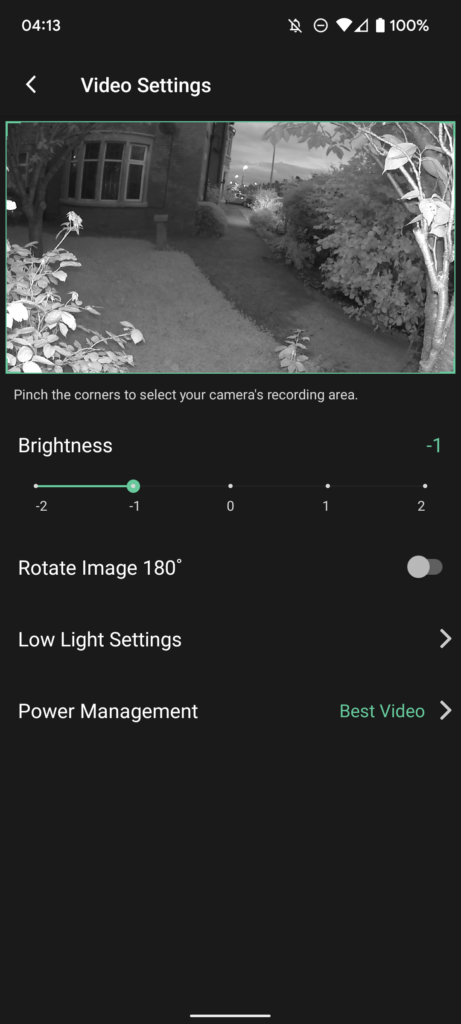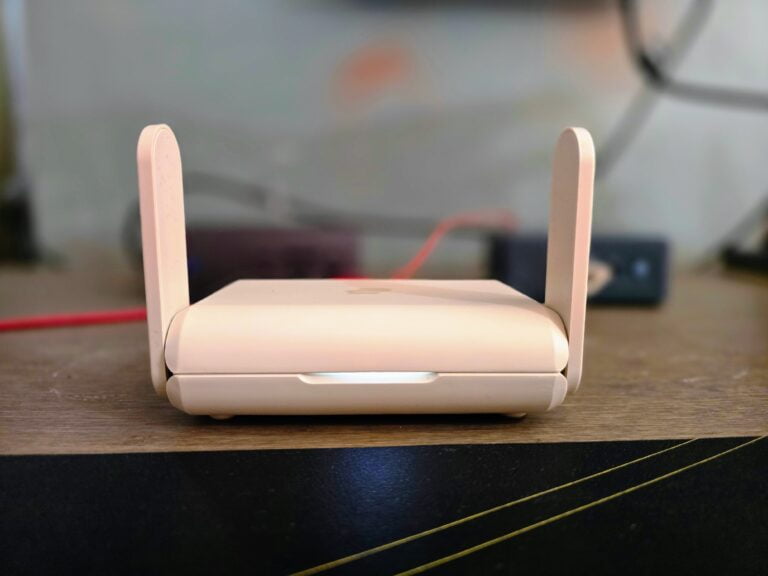Any links to online stores should be assumed to be affiliates. The company or PR agency provides all or most review samples. They have no control over my content, and I provide my honest opinion.
I reviewed the original Arlo Go back in 2018 when they were still under the helm of Netgear. This was originally sold as an exclusive to Vodafone under the branding V-Camera.
In the meantime, Reolink has come about and launched its original Reolink Go, then the Reolink Go Plus, Go PT, Go PT Plus and the Reolink Duo 4G. All of these cameras are excellent in their own right, and the Reolink Go Plus is generally a better camera all around compared to the Arlo Go.
More recently, Eufy has entered the 4G camera market with the Eufy 4G LTE Starlight
Therefore a replacement for the original Arlo Go has been well overdue in this increasingly competitive marketplace.
| Preview | Product | Rating | Price | |
|---|---|---|---|---|

| Arlo Go 2 3G/4G LTE Wireless Security Camera Outdoor, WiFi... |
£224.00 | Buy on Amazon |
Arlo Go 2 vs Arlo Go Mobile HD Specification
The Arlo Go 2 is a significant upgrade over the previous generation, as you’d expect for two pieces of tech 4 years apart.
The Arlo Go held up reasonably well, though, because many of the advanced smart features are handled in the cloud and require the Arlo Secure subscription.
The main upgrades include:
- Significant improvement in resolution.
- Spotlight, which helps achieve colour nighttime footage.
- WiFi as well as 4G.
Set Up – Cellular 4G and WiFi






I had some issues getting 4G to work at first, so I set the camera up with WiFi. This works like many other security cameras. You sign in to your 2.4Ghz network, provide the password to the Arlo app then show the QR code to the camera. It takes a little while to connect, but it does so eventually and will then go through the usual process of updates.


Connecting to 4G / LTE Cellular Mobile Data
If you bought this camera, then you almost certainly plan to use it with a SIM card for mobile data. Unfortunately, I had an absolute nightmare getting this to work.
I think some of these issues may be teething issues and also an issue with the Vodafone Smart SIM Card I was supplied.
For the Vodafone card I was sent, absolutely nothing worked. If you look at Amazon reviews for this type of SIM card, it appears Vodafone are very fickle about what devices they allow, and I suspect they have blocked the IMEI number of my SIM.
I ended up using my Smarty SIM card. This also didn’t work at first, but after adding the APN settings, it did work.
I suspect that Arlo may not have the camera working automatically with UK mobile providers yet.
To get this working, I had to do the normal set-up but then add the APN settings when it can’t find the camera:
- I set up the camera on WiFi first, as the mobile didn’t work. You can do it either way.
- When selecting mobile, I had to press the sync button and then scan the QR code.
- Wait several minutes until it tells you it can’t find the camera.
- Select add APN settings. For Smarty, you only need to add mob.asm.net under the APN. Name, no username, password or anything else required.
- Try and find the camera. This took quite a while, but eventually, it found it.
As I had set up the WiFi, it uses this as default and then will fall back to mobile data as a backup (which is the most logical set-up).
The physical installation is the same as any other battery camera, it uses the same thread size as other mounts, and there is a mount included in the packaging.
4G Signal Quality
A 4G connected camera is only as good as the 4G signal. All my reviews have used a Smarty SIM, which uses the Three network. I get quite a good Three signal from my phone at home, but I have found the signal to be a bit iffy with 4G cameras.
The same is true here, I had some intermittent connectivity issues. Therefore, you should probably consider the network you use and its coverage when buying any 4G camera. I think Vodafone would have performed better.
It does make me wonder why these companies don’t include an optional external antenna port allowing you to boost the signal a little.
This issue is one of the reasons why I think having WiFi backup for the camera is good. When I had issues with Reolink, I could normally see the notifications but struggled to download footage. If I had WiFi, I could at least pull the footage quicker when in close range via WiFi.
Day Time Video
Day time video is good and this is the norm for almost all security cameras I have used for the past few years.
In my initial position, I did find the white balance a bit off due to the light, but you can tweak the video settings within the app, to reduce or increase the brightness.
Night Time Video
At first, I placed the camera on my fence near some bushes at the end of my garden. Performance is good, but as you can see, when the spotlight is off, the IR glares off the bushes causing the path to be darker than I’d like. When the spotlight activates, the path is illuminated adequately, and the video switches to colour.
I then relocated the camera to the side of my house where I normally test WiFi cameras such as the Arlo Pro 4 and Eufy SoloCam E40. There is improved visibility here, and therefore the overall performance improves.
Motion Detection / Arlo App Settings
You need the Arlo secure plan to make the most of the camera, enabling the advanced motion features and activity zones.
This includes options for detecting:
- People
- Cars
- Animals
- General Motion
It also enabled activity zones allowing you to dial in the performance and either extend the battery or just reduce unwanted notifications
With this using Arlo secure, it has all the features as the normal Arlo cameras. So you even get things like package detection.
Battery Life
I have only been testing the camera for a bit over a week, so not drained the battery fully yet.
So far it appears to lose around 2% per day, giving roughly 45 days. During the testing period, I had the video set to the best quality, which will have a negative impact on the battery.
The position of my camera doesn’t trigger too many events with roughly 6-10 recordings per day. The battery life would be significantly reduced if you have this positioned in a more active area.
You can extend the battery life with a solar panel. I haven’t tested this with the Arlo, but when I used the Reolink with a solar panel, it did seem to improve the battery by quite a bit, even up north in the UK. The Eufy camera claims that the solar panel could provide unlimited battery, but I think this may be optimistic in the UK.
Subscription Costs / Cloud Recording
You don’t technically need a subscription plan to use the Arlo Go 2. You will get live video streaming and notifications. I also assume because it has a MicroSD slot, you can still record footage.
If it is a very remote area you are monitoring, this could be fine, but a significant number of features are missing without it.
Pricing is from £2.79pcm for one camera or £8.99 for unlimited, including 30 days of cloud recording.
The cloud recording is something I find quite useful on this compared to the microSD recording on the Reolink Go Plus. As previously highlighted, accessing footage on the Reolink can be a slow process sometimes, depending on the signal quality. With cloud recording, it is normally uploaded by the time I come to view the footage, and this is therefore much easier to use.
Price and Alternative Options
The Arlo Go 2 is available to buy now from the BT Shop for £309.99 and includes 2 years of Arlo Secure plus a free solar panel (under bundles). I assume this will be a limited-time offer.
It is also now available on Amazon UK for £279.99 but this only includes the standard 3 months trial of Arlo secure and no solar panel.
The original Arlo Go Mobile HD is still listed for over £300 and has now become completely redundant (unless you find a very good deal).
The Reolink Go Plus has an RRP of £230 but is currently £184.
You then have the Reolink Duo 4G for £260 (£290 RRP) or the Reolink Go PT Plus for £240 (£300 RRP).
One camera that seems to have slipped under my radar is the Eufy 4G LTE Starlight which was launched in April. This is priced at £259.99. This has a 2k starlight sensor allowing superior low light recording, but it still requires the spotlight for full-colour footage. It has GPS just like the Arlo, but it lacks WiFi.
There are a bunch of other random brands, but they don’t seem like they are worth bothering about.
Arlo Go 2 vs Reolink Go Plus vs Eufy 4G LTE Starlight
Only Reolink provide a full detailed specification but I have done my best to fill out as much information as possible comparing the three best options.
I have not used the Eufy 4G LTE Starlight and can’t confirm how good it is. I have always been very happy with Eufy products, though.
It is only £20 cheaper than the Arlo, and it lacks WiFi which is quite a big negative for me. It should, in theory, have better video quality thanks to the 2K starlight sensor, but I’d need to review it to confirm this.
The Reolink Go Plus is a good camera, and the main advantage is the attractive pricing.
It is worth noting that Arlo Go 2 has the widest viewing angle at 130°. It is not a massive difference, but every little helps if you are trying to monitor somewhere remote.
Overall
The Arlo Go 2 is a well-needed replacement for the ageing Arlo Go. In recent years, Reolink has easily surpassed the Arlo Go with its range of Go cameras, and now Eufy is in the game.
The Arlo Go 2 rebalances things, and I would personally say that the Arlo Go 2 is better than the Reolink Go Plus, mainly because I like the flexibility that the WiFi provides. The battery life also seems better, and this is one of the few scenarios where I prefer cloud recording over local storage.
Arlo has sensibly reduced the price compared to the previous generation, but it is still around £100 more than Reolink. I think the overall feature set is compelling enough to justify this added cost, and both cameras are excellent options depending on your specific requirements.
Arlo Go 2 Review Rating
Summary
The Arlo Go 2 is a superb 4G smart security camera. It has all the features you could want and superb battery life.
Overall
85%-
Overall - 85%85%
Pros
- 4G and WiFi connectivity
- Superb battery
- Spotlight with colour night time video
Cons
- Expensive vs competition
- Required manual APN entry for my SIM
I am James, a UK-based tech enthusiast and the Editor and Owner of Mighty Gadget, which I’ve proudly run since 2007. Passionate about all things technology, my expertise spans from computers and networking to mobile, wearables, and smart home devices.
As a fitness fanatic who loves running and cycling, I also have a keen interest in fitness-related technology, and I take every opportunity to cover this niche on my blog. My diverse interests allow me to bring a unique perspective to tech blogging, merging lifestyle, fitness, and the latest tech trends.
In my academic pursuits, I earned a BSc in Information Systems Design from UCLAN, before advancing my learning with a Master’s Degree in Computing. This advanced study also included Cisco CCNA accreditation, further demonstrating my commitment to understanding and staying ahead of the technology curve.
I’m proud to share that Vuelio has consistently ranked Mighty Gadget as one of the top technology blogs in the UK. With my dedication to technology and drive to share my insights, I aim to continue providing my readers with engaging and informative content.
Last update on 2025-07-12 / Affiliate links / Images from Amazon Product Advertising API








